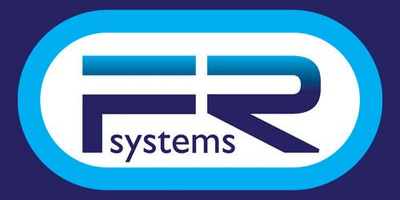Choosing a Reliable Hosting Provider
Selecting the right hosting provider is a foundational step in preventing website crashes and ensuring consistent site performance. A reliable hosting provider offers more than just server space—they provide scalable server resources, advanced security, and responsive customer support to help your website thrive.
When evaluating hosting providers, pay close attention to their server capacity and the quality of their data centers. Providers that utilize content delivery networks (CDNs) can deliver your content more efficiently to users around the world, reducing load times and minimizing the risk of overload during peak loads. Cloud hosting is another valuable feature, as it allows your site to scale resources dynamically in response to traffic surges, helping to prevent server overload and downtime.
Look for a hosting provider with a proven track record of uptime and the ability to handle high volumes of website traffic. By partnering with a reputable provider, website owners can focus on growing their business, confident that their site is equipped to handle whatever comes its way.
Implementing Effective Load Management
Effective load management is crucial for preventing user overload. This section explores strategies such as utilising load balancers, scaling resources, and monitoring traffic, all of which are vital to maintaining stability during high demand. Effective load management ensures user requests are distributed and processed efficiently, preventing bottlenecks.
Utilising Load Balancers
Load balancers distribute incoming network traffic across multiple servers. This ensures no single server bears the entire load, enhancing performance and reliability.
-
Traffic Distribution: Load balancers evenly allocate incoming requests, preventing any server from becoming a bottleneck.
-
Redundancy: If one server fails, the load balancer redirects traffic to others, maintaining uptime.
-
Scalability: Load balancers allow for the addition of servers without disrupting service, accommodating growth.
Utilising load balancers can significantly improve your site’s resilience and responsiveness, ensuring a seamless user experience even during peak traffic times. By working with many servers, load balancers help distribute the workload efficiently so that no single server is overwhelmed.
Scaling Resources Effectively
Scaling resources involves adjusting your server capacity to meet user demand. This can be achieved through vertical or horizontal scaling.
Vertical scaling means upgrading existing servers with more powerful components. While it enhances performance, it has limitations in terms of cost and capacity.
Horizontal scaling involves adding more servers to share the load. This approach is often more flexible and cost-effective, especially for handling variable traffic patterns.
By choosing the appropriate scaling method, you can ensure your website remains responsive and functional, even as user demand fluctuates. It's crucial to have enough resources, such as server capacity and database handling capabilities, to prevent overload and downtime during traffic surges.
Monitoring Traffic Patterns
Monitoring traffic patterns helps you anticipate and manage user overload. By analysing data, you can identify trends and prepare for potential spikes.
-
Traffic Analysis: Use analytics tools to track user behaviour and traffic sources. These tools provide insights into traffic trends and potential problem areas.
-
Pattern Recognition: Identify recurring events or times of increased activity.
-
Proactive Responses: Develop strategies to boost capacity during predicted surges.
Understanding traffic patterns allows you to plan effectively, ensuring your website stays operational and user-friendly, regardless of visitor numbers.
Optimising Website Performance
Optimising website performance is key to preventing user overload. Enhancing server capacity, streamlining content delivery, and leveraging caching techniques are some strategies that can make a significant difference. These strategies are especially important for handling high volumes of web traffic, which can otherwise lead to slowdowns or crashes during peak periods.
Enhancing Server Capacity
Enhancing server capacity ensures your website can handle an increase in user traffic without compromising performance.
Server Upgrades: Regularly upgrading your server hardware or software can make a significant impact. More RAM, faster processors, or updated operating systems can boost server efficiency. Increasing processing power allows servers to handle more simultaneous user actions without slowing down.
Cloud Solutions: Transitioning to cloud-based services offers flexibility and scalability. Cloud servers can automatically allocate resources, adapting to demand in real-time.
By enhancing server capacity, you can minimise downtime, ensuring a smooth experience for users even during high-traffic periods.
Streamlining Content Delivery
Streamlining content delivery involves optimising how content is served to users, reducing load times and improving responsiveness.
-
Content Delivery Networks (CDNs): Use CDNs to store copies of your site at multiple locations, reducing the physical distance between users and servers.
-
Image Optimisation: Compress images to decrease file size without compromising quality.
-
Minimise Scripts: Reduce the number of scripts and stylesheets to enhance load times.
By streamlining content delivery, you can ensure faster access to your site, improving user satisfaction and engagement.
Leveraging Caching Techniques
Caching temporarily stores frequently accessed data, reducing server load and speeding up content delivery.
-
Browser Caching: Encourage browsers to store static resources locally, reducing repeat requests to the server. Clearing the browser's cache can resolve issues caused by outdated or corrupt cached data, ensuring pages load correctly.
-
Server Caching: Use server-side caching to store rendered pages, decreasing the need for repeated processing.
-
Cache Invalidation: Regularly update cached data to ensure users receive the most recent content.
Leveraging caching techniques can significantly enhance website performance, ensuring a swift and smooth user experience.
Security Measures
Security is a vital component of website performance, as malicious attacks can quickly lead to website crashes and disrupt your online operations. To prevent crashes caused by security breaches, it’s important to implement comprehensive security measures.
Start by installing firewalls and intrusion detection systems to monitor and filter incoming requests, blocking suspicious activity before it can impact your site. Regularly update your website’s code and all third-party plugins to patch vulnerabilities that could be exploited by attackers. Consider deploying a web application firewall (WAF) for an extra layer of protection, ensuring that only legitimate traffic reaches your website.
Ongoing monitoring is essential—keep an eye out for unusual patterns or unauthorized access attempts, and have a clear response plan in place for potential incidents. By prioritizing security, website owners can safeguard their site against malicious attacks, maintain strong website performance, and prevent crashes that could harm their reputation and bottom line.
Preparing for Traffic Surges
Proper preparation for traffic surges is crucial to keeping your site running smoothly. Overwhelming traffic during peak events can easily crash unprepared websites. This section focuses on planning for high-demand events, creating a scalability strategy, and testing for peak performance.
Planning for High Demand Events
Anticipating high-demand events helps you prepare your website for increased traffic.
-
Event Forecasting: Identify potential events like big sales, sales, or product launches that may cause traffic spikes.
-
Capacity Planning: Ensure your hosting solution can handle anticipated demand.
-
Communication: Notify users of expected changes in performance to manage expectations.
By planning ahead, you can mitigate the risks associated with traffic surges, ensuring your website remains functional and user-friendly.
Creating a Scalability Strategy
Creating a scalability strategy involves planning how to expand your infrastructure to accommodate growth.
-
Assess Current Capacity: Evaluate your current infrastructure to identify limitations.
-
Define Growth Targets: Set clear objectives for future scalability needs.
-
Implement Solutions: Introduce scalable solutions such as cloud services or load balancing.
A well-thought-out scalability strategy ensures your website can evolve with your business, maintaining optimal performance regardless of user numbers. This proactive approach helps prevent future crashes during unexpected traffic surges.
Testing for Peak Performance
Testing for peak performance helps you identify weaknesses and make necessary improvements before traffic surges occur.
Load Testing: Simulate high-traffic scenarios to assess how your website performs under stress.
Stress Testing: Push your system beyond its limits to understand its breaking point. Stress testing helps you understand the specific conditions under which crashes occur, so you can address these weaknesses before they impact users.
Performance Optimisation: Use test results to optimise components, ensuring your site can handle real-world demands.
By regularly testing for peak performance, you can ensure your website is prepared for any traffic surges, maintaining a positive user experience.
Backup and Recovery Plans
Even with the best defenses, website crashes can still happen—whether due to technical glitches, human error, or unforeseen events. That’s why having a robust backup and recovery plan is essential for every website owner.
Regularly back up your website’s files and databases, and store these backups in a secure, off-site location or through trusted cloud services. Automated backup tools can simplify this process, ensuring you always have a recent copy of your site ready to restore. In the event of a crash, a reliable backup allows you to quickly recover your site, minimizing downtime and preventing data loss.
It’s also important to have a clear recovery plan: outline the steps for restoring your website, rebuilding any lost content, and communicating with your visitors about the situation. By being prepared, website owners can respond swiftly to website crashes, reduce their impact, and get their site back online with minimal disruption.
Ensuring Continuous Improvement
Continuous improvement is essential for maintaining a high-performing website. Site owners should regularly review and update their strategies to keep up with changing demands. This section covers conducting regular performance audits, staying updated with technology, and gathering user feedback to stay ahead.
Regular Performance Audits
Conducting regular performance audits helps you identify areas for improvement, ensuring your website operates at peak efficiency.
-
Benchmarking: Compare your site's performance against industry standards.
-
Identifying Bottlenecks: Use analytics tools to pinpoint slow-loading pages or resource-heavy scripts.
-
Implementing Improvements: Make necessary adjustments based on audit findings.
Regular audits keep your website running smoothly, enabling you to address issues before they impact user experience.
Staying Updated with Technology
Keeping your website up-to-date with the latest technology ensures it remains competitive and functional.
-
Software Updates: Regularly update software and plugins to leverage new features and security enhancements.
-
Industry Trends: Stay informed about emerging technologies and best practices in web development. Web developers play a key role in adopting these new technologies and ensuring the website remains current.
-
Innovation: Incorporate new technologies that can improve user experience or site performance.
By staying updated, you can maintain a cutting-edge website that meets the evolving needs of your users.
Gathering User Feedback
Gathering user feedback provides valuable insights into your website’s performance, helping you make data-driven improvements.
-
Surveys and Polls: Use surveys to gather opinions on website usability and performance.
-
Feedback Forms: Encourage users to report any issues or suggest enhancements. Feedback can highlight which useful features users appreciate most and suggest new ones to implement.
-
User Testing: Conduct user testing sessions to observe real interactions and identify potential pain points.
Incorporating user feedback ensures your website remains user-centric, fostering satisfaction and loyalty.
Conclusion and Final Thoughts
In summary, website performance is a critical factor in the success of any online business, and preventing website crashes should be a top priority for all website owners. By understanding the common causes of crashes—such as sudden traffic spikes, server overload, and security threats—and taking proactive steps like choosing a reliable hosting provider, implementing strong security measures, and maintaining a solid backup and recovery plan, you can minimize downtime and keep your site running smoothly.
A crashed website can lead to lost sales, a damaged reputation, and disappointed visitors, especially during massive traffic events like major sales or viral moments. By investing in the right infrastructure and strategies, you can prevent crashes, stay online during high-traffic periods, and provide a seamless experience for your users. Whether you’re preparing for major sales events or simply want to ensure your site is always available, the tips in this guide will help you maintain optimal website performance and achieve your business goals.
























